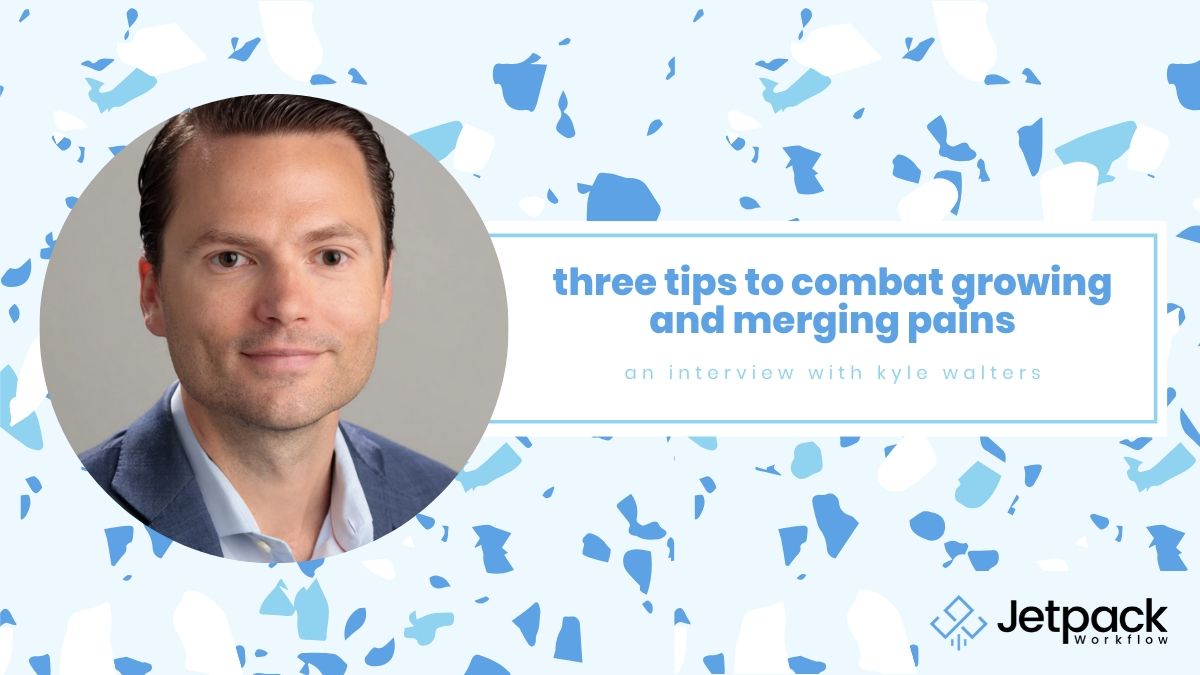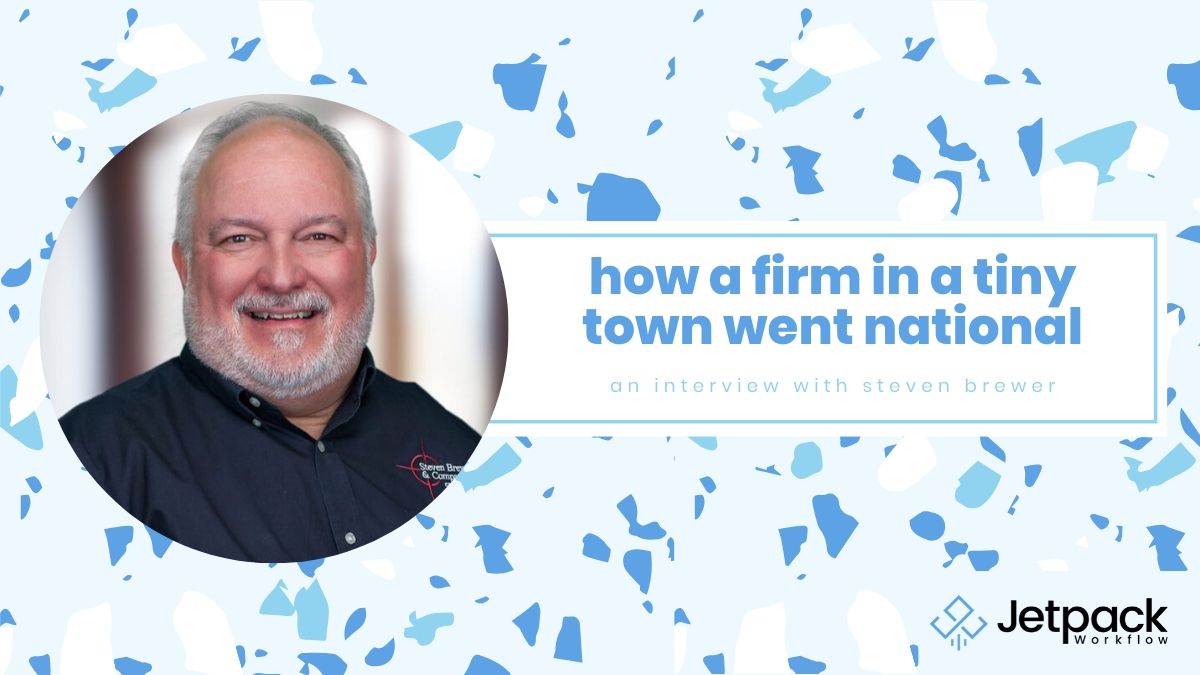Three Tips to Combat Growing and Merging Pains

Any business can be expected to have growing pains, and the faster your firm grows, the bigger those pains can be. This may include hiring new team members, onboarding experienced partners (who already have a specific way of doing things) and merging other firms with your own.
Today, David chats with Kyle Walters, who is involved with L&H, a CPA/wealth management combo financial firm. How has merging different kinds of firms worked out for Kyle’s company? What systems does he have in place to make this merging and growing process run smoothly? Keep reading (or give the episode a listen) to find out!
Points to Look Forward to:
- How L&H got started
- How merging new firms works
- Getting everyone on the same page
- Why merging accounting and tax services is a real need
- How to refer clients to a CPA or accountant
- https://www.thepersonalcfo.com/
- https://www.amazon.com/Personal-CFO-Secret-Getting-Money-ebook/dp/B07GJ8GK5Z/
- https://www.lhcpafirm.com/
Lessons from Kyle Walters on Growing and Merging Firms
L&H, a project of Kyle’s, combines accounting and CPA to work together under a single roof. But why is this kind of marriage a good idea, how is it valuable to clients, and what lessons about growth, partnerships, and merging does Kyle have to offer?
First, let’s talk about why putting accounting and tax in the same firm is such a great idea.
A Stunning Combination
The owners of both big and small businesses have to trust two people above many others: their accountant and their CPA. As Kyles puts it, these are often times their closest advisors.
Having an accountant and a CPA that work independently of one another can present problems from time to time. For one thing, they may each be seeing the business’s situation from a very different perspective. If they can’t talk to one another, they may give conflicting advice. This isn’t intentional; it’s really a system and communication problem.
Having a CPA and accountant in different houses also means extra work for the client. They may have to have the same conversations twice, once with their CPA and once with their accountant. They may have to give copies of the same documents, or share finances and sensitive information to both firms.
Of course, the more that information is shared, the less secure it is Kyle’s concept is to link a CPA and an accountant so they can work together to help a client. Information is only shared once, keeping it more secure and saving the client time. Advice can be coordinated when the CPA and accountant are able to talk to one another and have the same data.
So merging the two sides of the financial coin seemed like a great idea, one that would provide major value for the client. But that kind of growth and partnership would also mean new challenges. What tips does Kyle have for any who are considering forging a partnership with a firm from across the aisle?
Three Tips to Combat Growing and Merging Pains
Whether you’re thinking of merging with another firm or you’re simply looking to grow your own business, you know that such growth will come with new challenges. New team members will need to be trained. Partners will already have a different way of doing things.
Kyle had three main tips to combat the challenges of growing or merging firms. Let’s look at each of them.
Keep Consistent Systems
The way an accounting firm and a tax firm do things are different in a lot of ways. However, there are similarities there, too.
Focusing on the client’s experience, and on how they’d like to be treated, you can easily work out consistent systems and scorecards to keep things running smoothly across your business.
When new partners come aboard, whether through a merger or just through smart hiring, they may have a different way of doing things. That’s a great opportunity to blend the new with the old and reexamine the systems you already have in place.
This consistency even applies to the language you use across your company. Mixed up terminology will just add confusion to your team, slowing things down or allowing room for more mistakes.
The more you grow, the harder it will be to keep things consistent, so it’s very important to establish firm-wide systems and priorities from the start.
Focus on Broad Strokes First
When looking at systems and scripts across your firm, especially as it grows and you hire new team members, it’s very easy to get lost in the details.
Kyle suggests focusing on big-picture ideas first. How do you make the client happy? How can you bring more value? What exactly will you be charging for: time spent or jobs done?
Answering those questions first will keep you from getting lost in the tiny aspects of your firm’s operations.
Don’t Reinvent the Wheel
When growing or merging firms, it’s a great idea to think outside the box. Creativity is crucial for problem-solving.
However, there is no reason to reinvent the wheel when there are so many wonderful systems out there already, perfect jumping-off-points you can use to add structure to your growing business.
Choosing an Entrepreneurial Operating System (or EOS) will give you a major head start in keeping your firm consistent despite rapid growth. There are so many systems out there to start with. You can look into Verne Harnish’s book, Scaling Up, for help. Or you can also look into Gino Wickman’s book Traction.
Any system you use will mean a huge head-start for your company’s growth.
The Benefits of a Partnership Instead of Merging
Of course, many firm owners may not be interested in merging with another firm, be that a CPA or accounting firm. So what can be done to help your clients in that case?
Many of the problems mentioned above, when a client has a CPA and an accountant that are completely separate and don’t communicate, can be solved with stronger relations between different types of firms.
Say you own an accounting firm. You’re dealing with wealth management. Your client likes what you do and considers you a trusted advisor. They may ask for your advice on what CPA they should use.
At this point, you’re faced with a hard decision. If you suggest someone, and your client doesn’t like the person or firm you choose, you lose relationship points with that client.
Many accountants in this situation chose to suggest a list of three to five CPAs. That way they are not directly responsible for anyone suggested individual or firm.
But that is also a missed opportunity.
What if firms worked to select other firms they’d like to work closely with? What if accountants and CPAs found each other and formed loose partnerships, not merging, just working in tighter harmony and sending referrals back and forth?
Then clients would have a better experience, close to the experience of a merged tax and accounting firm, but with two distinct-but-friendly entities.
That is something suggested in this episode, an opportunity to build a business relationship that would help clients and generate more profits.
All in all, growing a business means new challenges. Taking on partners and hiring new team members means certain difficulties. And merging firms into one business will cause new struggles, as well. All those growing pains can be dealt with. Kyle Walters gave some amazing tips drawn from his own experience for firms aiming to grow rapidly or merge.
RELATED LINKS:








